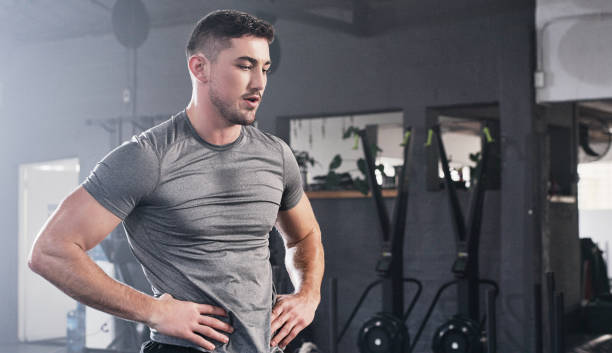Breathing right during strength training is necessary in order to get the most out of your workout and stay safe. Whether you’re lifting for strength, power, or endurance, mastering your breath can drastically improve your performance and prevent injuries. Let’s break down why breathing matters and how to do it right.
Why Breathe Properly?
First off, it helps keep your core stable and makes sure your form is on point, especially when you’re lifting heavy or doing complex moves. Engaging your core and keeping that intra-abdominal pressure (IAP) up means you’re less likely to get hurt.
Good breathing keeps the oxygen flowing to your muscles, boosting your endurance and overall performance. When your muscles get the oxygen they need, you can push harder and lift heavier without gassing out.
How Breathing Impacts Your Workout
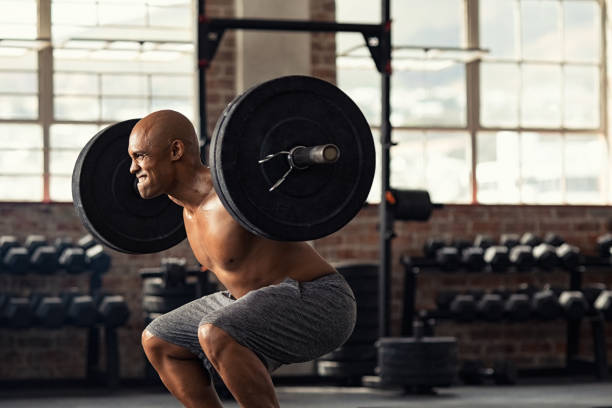
Your breathing pattern can make or break your strength training workouts. The two main techniques are diaphragmatic breathing and rib cage breathing.
- Diaphragmatic Breathing: Also called belly breathing, is when you inhale deeply through your nose, letting your diaphragm drop and your belly expand. This activates your diaphragm, the main muscle for breathing, and ensures you get enough oxygen flowing through your system.
- It also helps engage your core muscles, giving you stability during exercises. However, lifters must balance core stability with adequate oxygen intake to maintain both performance and safety during lifts Sembera et al. (2023)
- Rib Cage Breathing: This technique involves expanding your rib cage sideways while inhaling, making your ribs lift and spread out. It’s great for exercises that need a stiff torso, like heavy squats or deadlifts. Rib cage breathing helps create a solid base and supports your spine during these tough moves.
Using these breathing techniques in your strength training can boost your performance, lower your injury risk, and make your workouts more enjoyable.
Remember, getting the hang of proper breathing takes time. Focus on being consistent and controlled, and gradually work these techniques into your workout program.
How to Do These Breathing Techniques
Diaphragmatic Breathing

Diaphragmatic breathing, or belly breathing, is all about using your diaphragm, the muscle under your lungs. This technique helps you take in more oxygen, giving you the stamina to power through your lifts.
Here’s how to do it:
- Get comfy: Stand tall, sit up straight, or lie on your back.
- Hands-on: Place one hand on your chest and the other on your belly to feel your breath.
- Inhale through your nose: Feel your belly rise as you fill your lower lungs with air.
- Exhale through your mouth: Feel your belly fall as you push the air out.
This type of breathing boosts oxygen delivery to your muscles, cutting down on fatigue and helping you keep good form. It also helps you relax.
Rib Cage Breathing
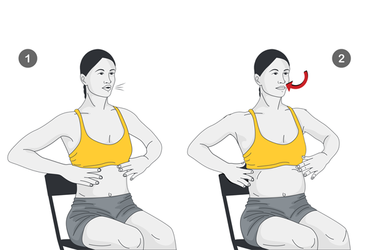
Rib cage breathing, or intercostal breathing, focuses on expanding your rib cage. This technique is great for exercises that need stability and control.
Here’s how to do it:
- Get comfy: Stand or sit with a straight back.
- Hands-on: Place your hands on the sides of your rib cage to feel the expansion.
- Inhale through your nose: Focus on expanding your rib cage sideways, filling the upper parts of your lungs.
- Exhale through your mouth: Feel your rib cage contract as you release the air.
Rib cage breathing helps you stabilize your torso during exercises like squats, deadlifts, and bench presses. It engages your core and supports good form, reducing injury risk.
By adding diaphragmatic and rib cage breathing to your routine, you’ll breathe better and lift more. These techniques set you up for a safe, effective workout, so you can enjoy the benefits of strength training without the injuries.
Exercise-Specific Breathing Techniques
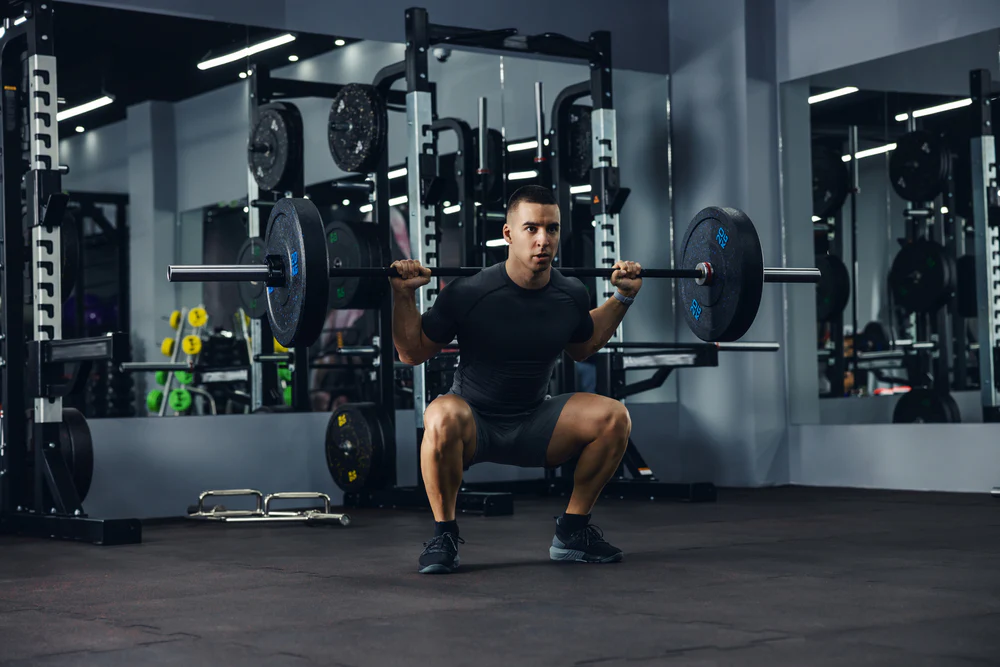
Let’s break down how to breathe during different exercises to get the most out of your training.
Squats and Deadlifts
For big compound movements like squats and deadlifts, you’ll need to breathe like a pro. Keep your core tight and your posture strong. Here’s the lowdown:
- Before the lift: Take a deep breath through your nose, filling your belly with air. This is called diaphragmatic breathing. Hold it for a sec to build up pressure in your abdomen.
- During the lift: Keep that pressure and exhale through pursed lips or a slightly open mouth as you lift. Make sure your exhale matches the effort.
- Between reps: Breathe in again before the next lift and repeat.
Breathing right during squats and deadlifts keeps your core stable, protects your spine, and helps you lift more. Practice makes perfect, so keep at it.
Bench Press and Shoulder Press
Breathing is just as important when you’re pressing weights. Here’s how to do it:
- Before the lift: Inhale deeply through your nose, filling your belly. Hold it to create pressure and stabilize your core.
- During the lift: Exhale through your mouth as you press the weight. Your exhale should match the effort. Inhale at the top or during the lowering phase.
- Between reps: Breathe in again before the next press and repeat.
Research by Blazek et al. (2021) suggests that using the Valsalva Maneuver (VM) during the bench press can shorten the sticking region, which is the toughest part of the lift. By holding your breath during the eccentric phase and exhaling through the sticking region, you can generate more stability and complete lifts more efficiently.
Avoid reverse breathing (REVB) during max lifts, as this technique has been shown to slow down performance and make lifts harder (Blazek et al. (2021)). This is especially important for lifters aiming for personal bests or competing.
Good breathing helps you stay stable and powerful during bench and shoulder presses. Don’t hold your breath too long—keep the oxygen flowing.
Pull-Ups and Rows

Pull-ups and rows also need proper breathing. Here’s how to nail it:
- Before the movement: Inhale deeply through your nose, filling your belly and engaging your core.
- During the movement: Exhale as you pull yourself up or row. Match your exhale with the effort. Inhale during the lowering phase or when returning to the start.
- Between reps: Breathe in again before the next move and repeat.
Breathing right during pull-ups and rows keeps your core stable and your movements efficient.
By working these breathing techniques into your routine, you’ll lift better, protect your body, and get more out of your workouts.
Keep practicing, stay in control, and listen to your body. Adjust your breathing as needed to stay comfortable and effective.
Why Breathing Right Matters in Strength Training

When you breathe properly, you can boost your performance and see better results. Let’s break down how focusing on your breath can make a big difference.
More Oxygen, More Power
Breathing deeply during your exercises helps pump more oxygen into your muscles. Oxygen is like fuel for your muscles, helping them work harder and longer.
When you take deep breaths, you fill your lungs with air, giving your muscles the oxygen they need to keep going.
With better oxygen flow, you can last longer in your workouts, feel less tired, and keep your muscles working at their peak. This means you can push through tough sets and keep your workout intensity high, leading to bigger strength gains over time.
Keeping steady
Proper breathing also helps you create intra-abdominal pressure (IAP). This is the pressure inside your belly that helps keep your spine stable and gives you a strong base for lifting heavy weights.
When you take a deep breath and tighten your core, you create this pressure, which acts like a natural weight belt. It keeps your spine safe and stable during big lifts like squats, deadlifts, and overhead presses. This lets you lift heavier weights without hurting yourself.
To get the most out of IAP, practice breathing techniques like the two we discussed (diaphragmatic breathing and rib cage breathing). These help you engage your core and create the pressure you need to support your lifts.
By focusing on better oxygen delivery and creating intra-abdominal pressure with proper breathing, you can take your strength training to the next level. Make these techniques a regular part of your workouts and pay attention to your breath during each exercise.
Common Mistakes in Breathing
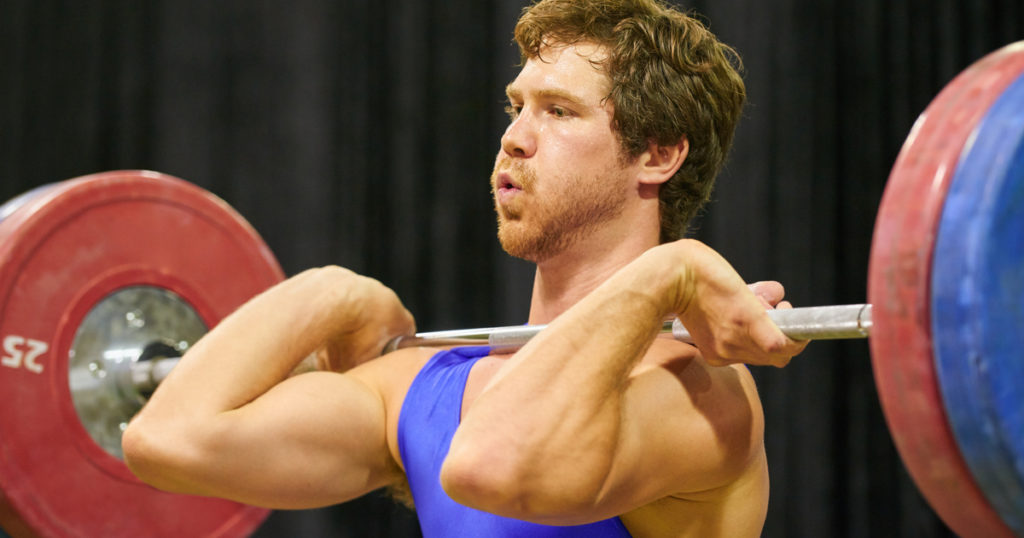
Breathing right during strength training is a game-changer. But, let’s face it, many folks mess it up. Two big no-nos are holding your breath and shallow breathing. Let’s break these down and see why they’re bad news.
Holding Your Breath
Ever find yourself holding your breath while lifting? You’re not alone. It’s a common slip-up, especially when you’re pushing hard. But, it’s not doing you any favors.
Holding your breath can crank up the pressure in your belly, putting a strain on your heart and blood vessels. Plus, it cuts off the oxygen supply to your muscles, making them less effective. And if you’ve got any heart issues, it can spike your blood pressure, which is a big red flag.
So, what’s the fix? Breathe out when you’re lifting and breathe in when you’re relaxing. This keeps the oxygen flowing and helps you perform better without risking injury.
Shallow Breathing
Then there’s shallow breathing. You know, those quick, tiny breaths that don’t really fill your lungs. This one’s a sneaky performance killer.
When you breathe shallowly, your muscles don’t get enough oxygen. This can make you tire out faster and weaken your strength. The trick is to breathe deeply, using your diaphragm.
This means taking big breaths that expand your chest and fill your lungs. Deep breathing boosts your oxygen levels, giving you more energy and better performance during your workouts.
Shallow or fast-paced breathing can impair gas exchange, reduce endurance performance, and even cause diaphragm fatigue (Migliaccio et al., 2023). Fast breathing increases alveolar ventilation, which may make you feel like you’re working harder but can actually lower your workout efficiency.
By steering clear of these breathing erros, you can get the most out of your strength training. Remember, exhale when you’re lifting and inhale when you’re relaxing to keep that oxygen flowing. And practice deep, diaphragmatic breathing to power up your workouts.
Tips and Tricks to Master Your Breathing

Let’s talk about how to get your breath game on point with some simple drills and tips.
Breathing Drills to Try
Getting your breathing technique down is key. Here are a couple of drills to help you out:
- Box Breathing: Think of it like a square. Inhale through your nose for four counts, hold for four, exhale through your mouth for four, and hold again for four. Repeat this a few times, keeping it smooth and steady.
- Pursed Lip Breathing: This one’s great for when you’re really pushing it. Breathe in deeply through your nose, then exhale slowly through pursed lips, like you’re whistling. It helps keep your breathing steady and your oxygen flowing.
On top of that, incorporating slow-paced breathing, which involves taking 4-10 breaths per minute, can reduce your heart rate and improve focus and oxygen delivery to your muscles (Migliaccio et al., 2023). This method helps you stay calm and controlled, which is key during both lifting and recovery.
Keep It Consistent and Controlled
Once you’ve got the drills down, it’s all about keeping your breathing consistent and controlled throughout your workout. Here’s how:
- Find Your Rhythm: Everyone’s got a different groove. Try inhaling when you’re lowering the weight and exhaling when you’re lifting it. Play around with it until you find what feels right.
- Nose Breathing: Whenever you can, breathe in through your nose. It filters and warms the air, making it easier on your lungs. Plus, it can help you stay calm and focused.
- Don’t Hold Your Breath: It’s tempting to hold your breath during tough lifts, but try to avoid it. Holding your breath can spike your blood pressure and make you dizzy. Keep a steady flow of air going in and out.
By practicing these drills and keeping your breathing steady, you’ll see a big boost in your strength training. Your breath is your secret weapon for better performance and form.
Sources
- Sembera, M., Busch, A., Kobesova, A. et al. The effect of abdominal bracing on respiration during a lifting task: a cross-sectional study. BMC Sports Sci Med Rehabil 15, 112 (2023). https://doi.org/10.1186/s13102-023-00729-w
- Blazek D, Kolinger D, Petruzela J, Kubovy P, Golas A, Petr M, Pisz A, Stastny P. The effect of breathing technique on sticking region during maximal bench press. Biol Sport. 2021 Sep;38(3):445-450. doi: 10.5114/biolsport.2021.100362. Epub 2020 Nov 4. PMID: 34475625; PMCID: PMC8329978.
- Harbour E, Stöggl T, Schwameder H, Finkenzeller T. Breath Tools: A Synthesis of Evidence-Based Breathing Strategies to Enhance Human Running. Front Physiol. 2022 Mar 17;13:813243. doi: 10.3389/fphys.2022.813243. PMID: 35370762; PMCID: PMC8967998.
- Migliaccio GM, Russo L, Maric M, Padulo J. Sports Performance and Breathing Rate: What Is the Connection? A Narrative Review on Breathing Strategies. Sports (Basel). 2023 May 10;11(5):103. doi: 10.3390/sports11050103. PMID: 37234059; PMCID: PMC10224217.

